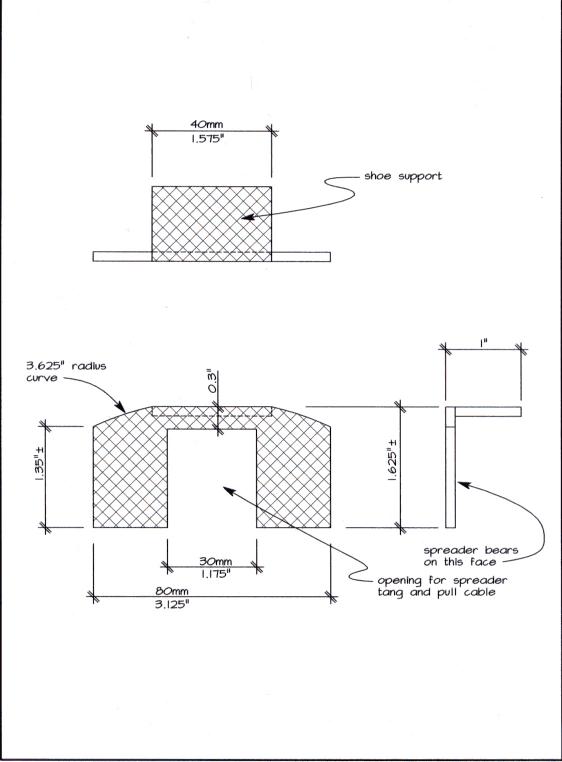QUOTE(craig downs @ Oct 10 2008, 12:17 AM)

The stop will have to have support blocks welded on to reach the rear of the spreaders.
This comment has me confused!!
As I read it, you are saying that there is a "stop" that limits how far to the side the spreader can move. (in addition to rubbing on the "backing plate")
I can't see the need due to the fact that the shoe will only move outward a certain amount and that would limit the side to side movement.
(as you pull on the cable, it would pull the spreader and shoe assembly off to that side and stop once that shoe is in contact with the drum. Then continuing to pull would spread the other shoe outward)
It may have somthing to do with the fact that there will always be a certain amount of tension on the cable??
Maybe I'm just reading your comment wrong!!!
If you could add an arrow to the photo showing the wear pattern on the spreader, it may make it clear.
That brings up another subject!
Are you planning on installing a "return" spring (as shown on that sub-cable)? I haven't seen anybody show consern about it, even in bell-crank versions.
In most versions, everybody is counting on the shoe return spring (the one near the spreader) on pulling the cable back!!!!!
In the original 911, there isn't an additional return spring, but that's a straight pull.
What was there in the original BMW installation?? (wish I had a black E30 to look under!)
Wes


